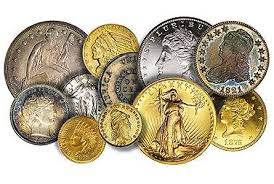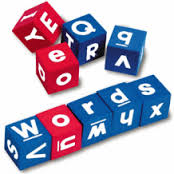Магистры-экономисты. Английский язык english for masters of economics
 Скачать 4.55 Mb. Скачать 4.55 Mb.
|
|
Translate into English. Деньги – это товар, который является эквивалентом стоимости других товаров. Евро является примером объединения валютных систем ряда стран. Появление евро позволило решить проблему межгосударственных платежей. До XX века роль мировых денег играли благородные металлы. В некоторых странах запрещено использовать для сделок внутри страны иностранную валюту, в других это разрешено. Основная форма фиатных денег - банкноты и безналичные деньги, находящиеся на счёте в банке. 15. Fill in the gaps in the text. Summarize it. Coins  A coin is a piece of hard material used primarily as a (1) _____ of exchange. They are standardized in weight, and produced in large quantities at a (2) _____ in order to facilitate trade. They are most often issued by a government. A coin is a piece of hard material used primarily as a (1) _____ of exchange. They are standardized in weight, and produced in large quantities at a (2) _____ in order to facilitate trade. They are most often issued by a government.Coins are usually (3) _____ or alloy, or sometimes made of synthetic materials. They are (4) _____ disc shaped. Coins made of (5) _____ metal are stored in large quantities as bullion coins. Other coins are used as money in everyday transactions, (6) _____ alongside banknotes. Usually the highest value coin in circulation is worth less than the lowest-value (7) _____. In the last hundred years, the face value of circulation coins has occasionally been lower than the value of the metal they (8) _____, for example due to inflation. Historically, a great quantity of coinage metals (including alloys) and other (9) _____ have been used to produce coins for circulation, collection, and metal investment: (10) _____ coins often serve as more convenient stores of assured metal quantity and purity than other bullion. https://en.wikipedia.org LISTENING 16. Listen to the episode about money. Fill in the gaps in the text. «Money makes _____». I wonder if this famous English expression is very true. If you have money, the world goes _____ and you are happy. If you don’t have money, the world might not go _____. They also say that «money is _____». I think this is so true. Money makes people kill and steal. Greed means there are things in the world like blackmail, corruption, slave labour _____ terrible things. Another common saying in English is “money can’t buy happiness”. I’m _____ this one. I know if I had loads of money I’d be pretty happy. I think if all the world’s money _____, the world would go round more happily, and there would _____ happiness. D  iscussion iscussion PROJECT WORK 18. Surf the Internet and make a presentation of currency of any country you like. Use the questions as a plan.  What is the symbol of the currency? What are the official users of the currency? What is the history of origination? What is the inflation rate of the currency? Does this currency have any nickname? What can you say about the design of coins and notes? What can you say about the amount of money in circulation?  UNIT 3. MARKETS UNIT 2. MONEY LEAD-IN W  hat is market? hat is market?What types of market structures do you know? What is the most effective market structure? Match the terms and their Russian equivalents.   сырье market structure    пассивный участник рынка industry   количество start-up costs   рыночная структура market power   активный участник рынка competition   потребитель price maker   конкуренция raw material   позиция на рынке price taker   отрасль экономики amount   издержки освоения нового предприятия consumer 2. Fill in the gaps in the sentences using these words. _______ is a person or company that has no control to dictate prices for a good or service. In economics, there are four general _______. Economists seek to analyze broad trends to understand _______ motivation. You must take into account your _______ when you are thinking over your new business. _______ refers to the amount of influence that a firm has on the industry in which it operates. Firms with market power are said to be "______" as they are able to set the price for an item while maintaining market share. _______, also known as a feedstock, is a basic material that is used to produce goods. In modern economies, there are dozens of different _______ classifications, which are typically grouped into larger categories called sectors. TEXT 1 MARKET STRUCTURE T  he term market structure refers to the level of competition experienced by businesses in an industry. This factor determines the nature of the product sold, how easy it for new businesses to enter that industry and the amount of information available concerning that industry. There are precisely four major types of market structures - Perfect Competition, Monopoly, Oligopoly, and Monopolistic Competition. Perfect competition and monopoly are extremes at the opposite ends of the competitive spectrum. Most real world firms have characteristics that more closely resemble the monopolistic competition and oligopoly models. he term market structure refers to the level of competition experienced by businesses in an industry. This factor determines the nature of the product sold, how easy it for new businesses to enter that industry and the amount of information available concerning that industry. There are precisely four major types of market structures - Perfect Competition, Monopoly, Oligopoly, and Monopolistic Competition. Perfect competition and monopoly are extremes at the opposite ends of the competitive spectrum. Most real world firms have characteristics that more closely resemble the monopolistic competition and oligopoly models.Monopoly: A monopoly exists when one company and one only provides services in a particular industry, or one company dominates and consumers cannot substitute anything that comes close. The monopolist sells a product for which there are no close substitutes. The monopolist controls the market because it is difficult for other firms to enter such industries. The challenges include high start-up costs and difficulty in obtaining strategic raw materials or information regarding business operation. The monopolist has great market power and can therefore set the price of products sold in the market. Today, very few industries are monopolies. Utility companies such as water companies or electric companies may be considered monopolies. Consumers can't exactly substitute something else for electricity from the local provider, unless they switch to firewood and candles. Oligopoly: An oligopoly consists of only a handful of companies selling similar products. They offer the same product for sale and compete aggressively for market dominance. Consumers can substitute products, but only one company's offerings for another. Examples of firms in this market structure are telecommunications and petroleum companies. Entry into this industry is also difficult as start-up costs are very high, there is control of strategic raw material and information is not easily available. A specific type of oligopoly is duopoly when only two producers exist in one market and have dominant control over it. Companies in pharmaceuticals and health insurance have become successful in establishing oligopolies in the U.S. Competition: This market structure is characterized by many buyers and many sellers of a product. The product is not unique as it is available from many sellers. Firms in this market structure are price takers as they cannot sell above the price of their competitors. There is perfect knowledge about the business and there are no barriers of high start-up cost and control of strategic raw materials. Agricultural markets are the representation of perfectly competitive markets. These are marketplaces which have a large number of vendors selling fruit, vegetables, and poultry - namely, identical produce. The prices of goods are competitive, and no single seller can yield an influence over the pricing. Consumers are free to pick any seller, depending upon their choice. Monopolistic Competition: In monopolistic competition, an industry contains many competing firms, each of which has a similar but at least slightly different product. It's very similar to competition with the exception that the products themselves are a bit different from one another, so consumers look for those differences rather than price differences. An example is the restaurant industry. Anyone can obtain the proper permits, licenses and such and open a restaurant offering any cuisine or food in the world. Whether the restaurant is successful or not depends upon whether or not consumers like the food, service, décor, location, and all the other factors that make restaurants successful. http://wizznotes.com http://business.lovetoknow.com TASKS TEXT COMPREHENTION Are these sentences true (T) or false (F)? Correct the false ones.
Most real world firms have characteristics that resemble the oligopoly models. The consumer has market power and sets the price of products sold in the market. Oligopoly describes a market structure in which there are a lot of large firms. A monopoly exists when one company provides services in a particular industry. In monopolistic competition, many sellers sell the same product. Definition of the market structure is fluid. Fill in the table.
VOCABULARY PRACTICE 3. Give English equivalents for the following words and word combinations from Text 1. Cвободная конкуренция; предприятие коммунального обслуживания; лидирующее положение на рынке; конкурент; противоположность; простота; близкий аналог-заменитель; издержки освоения нового предприятия; отрасль экономики; нефтяная компания; древесное топливо; промышленное предприятие; разрешение; определение; сырье; покупатели и продавцы. Find words in Text 1 which match the definitions below.   1. _________ – an exclusive control over the trade or production of a commodity or service through exclusive possession. 2. _________ – a replacement or stand-in for something.   3. _________ – things that exhibit absolute difference. 4. _________ – A difficult task, especially one that the person making the attempt finds more enjoyable because of that difficulty.  5. _________ – а legal document giving official permission to do something.   7. _________ – a feedstock, is a basic material that is used to produce goods, finished products, energy, or intermediate materials which are feedstock for future finished products. 6. _________ – one who provides a service, commodity, or the means for subsistence. Fill in the table of derivatives paying attention on word formation. Make up sentences.
|

